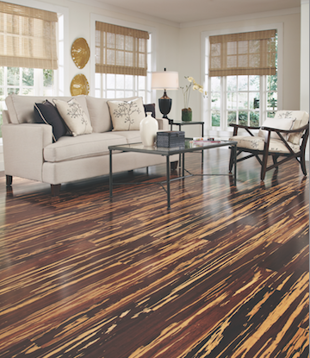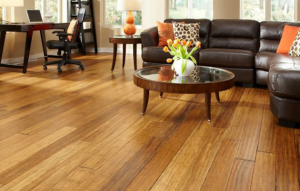Floors are an essential and important element in an interior design scheme. Small wonder, then, that the eye-catching patterns of bamboo flooring have been attracting attention. Made from the bamboo plant—a grass—this style of flooring allows homeowners to make a bold design statement underfoot. Another reason for the buzz? Bamboo is considered an eco-friendly flooring option. “While bamboo flooring is unique and beautiful, it’s also a fast-growing grass that reaches maturity in four to six years,” reports Chelsea Fossum, a buyer for Lumber Liquidators. “This makes it a highly renewable resource that is gaining popularity in home design.”
How It’s Made
To make bamboo flooring, the stalks of the bamboo plant are cut into thin strips and bonded together in layers with the use of an adhesive resin. They can be layered horizontally, with the strips facing up to reveal the natural shape of the plant, or vertically, with the strips turned on their ends and pressed one against the other, resulting in a striated pattern. A third process, which creates a product known as “strand-woven bamboo,” involves shredding the bamboo stalks, mixing the fibers with adhesive, and pressing them together into highly durable flooring sheets.




